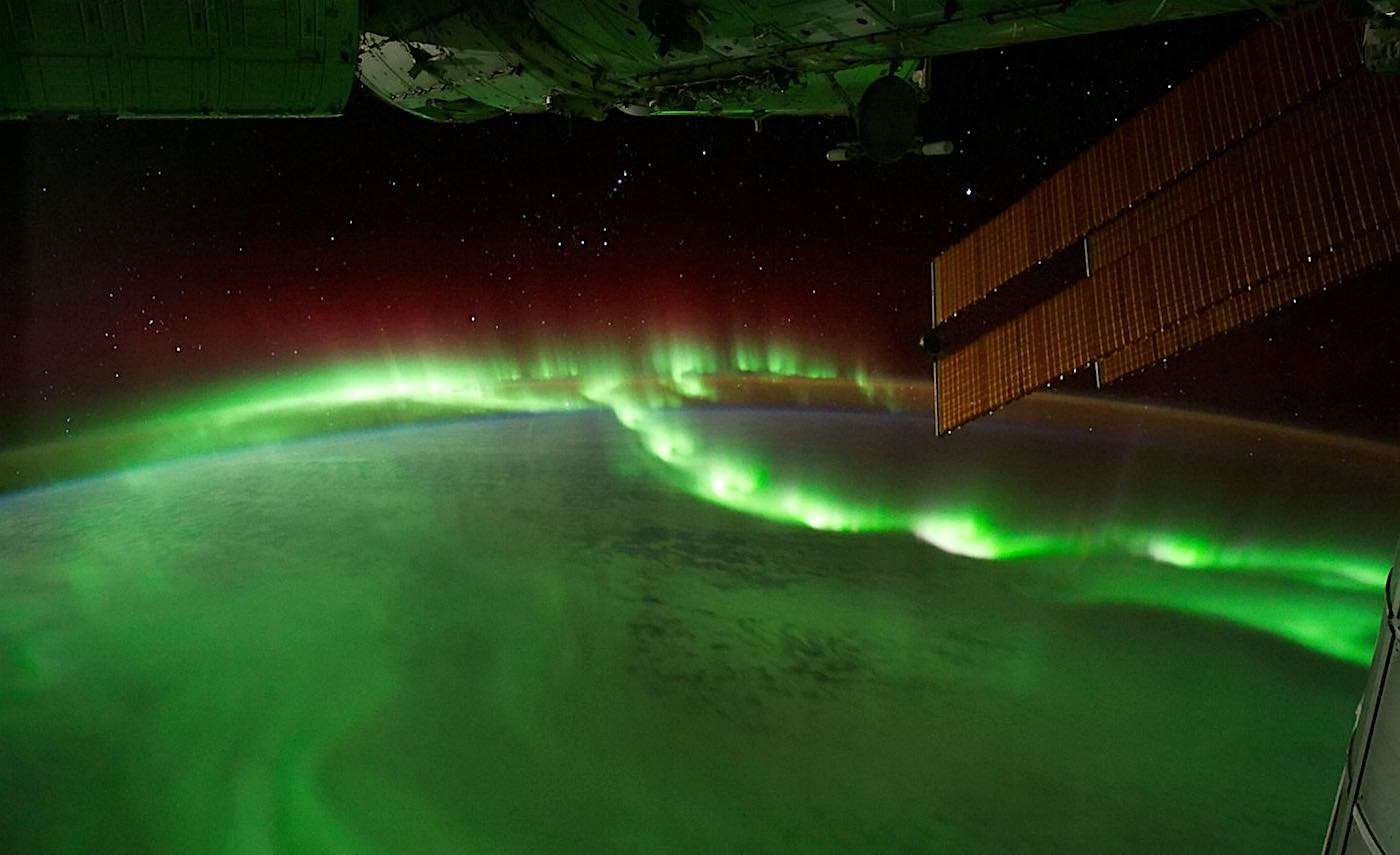Scientists Hack Photosynthesis to Make Crops Produce More, But With Less Water
Illinois and Essex Scientists at RIPE are changing the way in which crops use sunlight and water to make them 60% more efficient.

They never had the computing power to figure it out before. But now, a NASA mission has unlocked some answers around the phenomenon of space auroras and how they form across the galaxy.
A special type of aurora, draped east to west across the night sky, like a glowing pearl necklace, is helping researchers better understand the science of auroras and their powerful drivers out in space.
Known as auroral beads, these lights often show up just before large auroral displays, which are caused by electrical storms in space called substorms.
They are atmospheric phenomenons made up of bands of light caused by charged solar particles following the Earth's magnetic lines of force.
If a planet has an atmosphere and magnetic field there is usually an aurora.
Previously, scientists were not sure if auroral beads are somehow connected to other auroral displays as a phenomenon in space that precedes substorms, or if they are caused by disturbances closer to Earth's atmosphere.
But powerful new computer models combined with observations from NASA's THEMIS mission (Time History of Events and Macroscale Interactions during Substorms) have provided the first strong evidence of the events in space that lead to the appearance of these beads and demonstrated the important role they play in the space environment around Earth.
By providing a broader picture than can be seen with the three THEMIS spacecraft or ground observations alone, the new models have shown that auroral beads are caused by turbulence in the plasma-a fourth state of matter, made up of gaseous and highly conductive charged particles-surrounding Earth.
The results will ultimately help scientists better understand the full range of swirling structures seen in the auroras-and learn how to better protect satellites orbiting our planet. (WATCH a NASA video about the beads below…)
"Now we know for certain that the formation of these beads is part of a process that precedes the triggering of a substorm in space…an important new piece of the puzzle," said Professor Vassilis Angelopoulos, principal investigator of THEMIS at the University of California, Los Angeles.
Auroras are created when charged particles from the Sun are trapped in Earth's magnetic environment-the magnetosphere-and are funneled into Earth's upper atmosphere, where collisions produce the glow in hydrogen, oxygen, and nitrogen atoms and molecules.
By modeling the near-Earth environment on scales from tens of miles to 1.2 million miles, the THEMIS scientists were able to determine the details of how auroral beads form.
Dr Evgeny Panov, lead author on one of the new papers and THEMIS scientist at the Space Research Institute of the Austrian Academy of Sciences, said, "THEMIS observations have now revealed turbulences in space that cause flows seen lighting up the sky as of single pearls in the glowing auroral necklace.
"These turbulences in space are initially caused by lighter and more agile electrons, moving with the weight of particles 2000 times heavier, and which theoretically may develop to full-scale auroral substorms."
As streaming clouds of plasma belched by the Sun pass Earth, their interaction with the Earth's magnetic field creates buoyant bubbles of plasma behind Earth.
Like a lava lamp, imbalances in the buoyancy between the bubbles and heavier plasma in the magnetosphere creates fingers of plasma 2,500 miles wide that stretch down towards Earth, scientists said.
Signatures of these fingers create the distinct bead-shaped structure in the aurora, experts say.
"We have only recently gotten to the point where computing power is good enough to capture the basic physics in these systems," said Dr David Sibeck, THEMIS project scientist at NASA's Goddard Space Flight Center in Maryland.
It requires very sophisticated algorithms and very big supercomputers.
Now that scientists understand the auroral beads precede substorms, they want to figure out how, why and when the beads might trigger full-blown substorm, the researchers said.
At least in theory, the fingers may tangle magnetic field lines and cause an explosive event known as magnetic reconnection, which is well known to create full-scale substorms and auroras that fill the nightside sky, experts said.
Since its launch in 2007, THEMIS has been taking detailed measurements as it passes through the magnetosphere in order to understand the causes of the substorms that lead to auroras.
In its prime mission, THEMIS was able to show that magnetic reconnection is a primary driver of substorms. The new results highlight the importance of structures and phenomenon on smaller scales – those hundreds and thousands of miles across as compared to ones spanning millions of miles.
After the initial success of the new computer models, THEMIS scientists are eager to apply them to other unexplained auroral phenomena, they added.
(The findings were published in the journals Geophysical Research Letters and Journal of Geophysical Research: Space Physics.)
SHINE a Light on Our Awe-Inspiring Earth By Sharing on Social Media
Be the first to comment